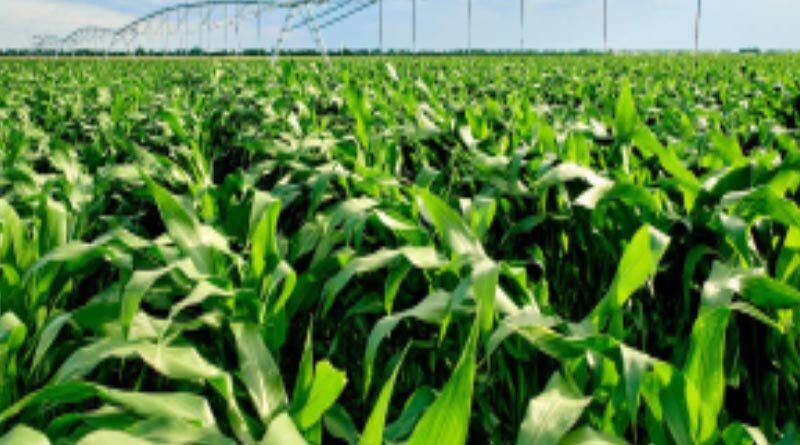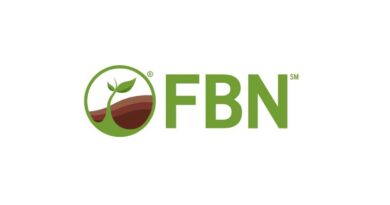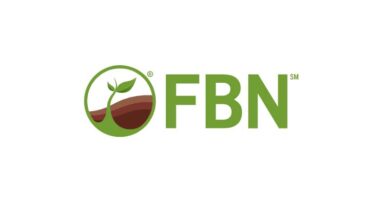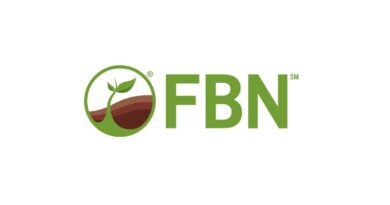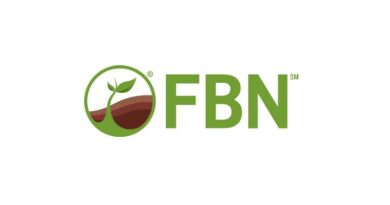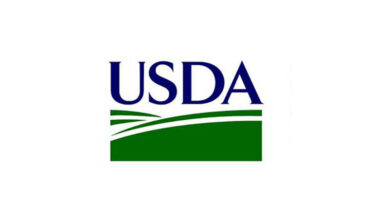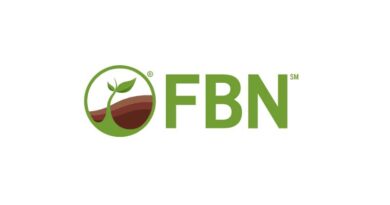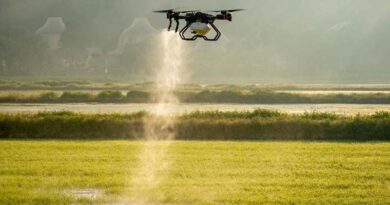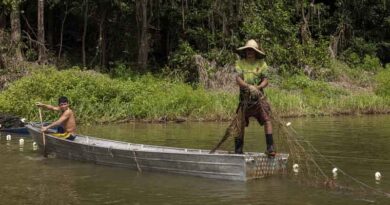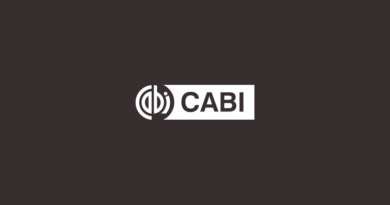Do You Qualify For Supplemental Crop Insurance?
22 January 2022, Texas: We all are aware that input costs continue to rise and approved trend adjusted yields are not keeping up with expected yields.
When 85% Revenue Protection just isn’t enough
This has caused many producers who have historically purchased an upper level Revenue Protection (RP) policy, to look at the 80 or 85% revenue guarantee and realize, this may not be enough revenue to satisfy their risk management program.
Supplemental Coverage Option (SCO) and Enhanced Coverage Option (ECO) provide an opportunity to increase both yield and revenue coverage to a level that provides better financial coverage.
Supplemental Coverage Option (SCO)
What is it
SCO is a county-level crop insurance option that provides additional coverage for a portion of a producer’s underlying crop insurance policy deductible.
Producers must buy it as an endorsement to either the Yield Protection, Revenue Protection, or Revenue Protection with the Harvest Price Exclusion policies.
It was originally offered in 2015 for select counties. Due to its success, the program has expanded throughout the country for many different crops.
The federal government provides a 65% premium subsidy for SCO total premium.
How does it work
SCO follows the coverage of your underlying policy. If you choose Revenue Protection, then SCO covers revenue loss. If you choose Yield Protection, then SCO covers yield loss.
The amount of SCO coverage depends on the liability, coverage level, and approved yield for your underlying policy. However, SCO differs from the underlying policy in how a loss payment is triggered.
The underlying policy pays a loss on an individual basis and an indemnity is triggered when you have an individual loss in yield or revenue.
SCO pays a loss on an area basis, and an indemnity is triggered when there is a county level loss in yield or revenue.
The following is an example of a corn grower’s policy:
| Grower APH: 200 | County Expected Yield: 205 |
| Underlying Policy: 75% RP | County SCO Coverage: 86% |
| Spring Price: $5.50 | Harvest Price: $5.00 |
| Producer Yield: 180 | County Yield: 180 |
| Expected Revenue: $1,100 | Expected County Revenue: $1,127.50 |
The underlying policy covers 75 percent (or $825) of the expected crop value and leaves 25 percent (or $275) uncovered as a deductible.
In this example, SCO would begin to pay when the County Average Revenue falls below 86% of its expected level ($969.65).
It would pay out fully when the county average revenue falls to the coverage level of the underlying policy ($845.62, 75% of expected county revenue).
This example would provide $121.00 of coverage per acre based on 11% of the producer’s expected revenue (86%-75%).
The dollar amount of SCO coverage is based on the percent of crop value covered. In this example there are 11 percentage points of coverage (from 86 percent to 75 percent).
Eleven percent of the expected crop value is $121.00 (or 11 percent • $1,100.00).
The SCO policy can cover up to $121.00 of the $275 deductible amount not covered by your underlying policy.
Who is a good fit
This policy is a good fit for producers that trend with or better than the county. SCO payments are determined only by county average revenue or yield, and are not affected by whether you receive a payment from your underlying policy.
It is possible to experience an individual loss but to not receive an SCO payment, or vice-versa.
This policy may not be a good fit for producers that do not have yields that trend on average below the county.
If you have a crop that yields less than the county, you may miss out on an indemnity even though you had a poor crop.
The 65% subsidy makes this attractive to many producers because this allows them to increase their coverage to 86% at a much more affordable premium versus the higher cost upper level RP plans in certain areas of the country.
Enhanced Coverage Option (ECO)
What is it
ECO is a county-level crop insurance option that provides additional coverage for a portion of a producer’s underlying crop insurance policy deductible.
Producers must buy it as an endorsement to either the Yield Protection, Revenue Protection, or Revenue Protection with the Harvest Price Exclusion policies.
Originally offered in 2021 for select counties, the program has expanded throughout the country for many different crops.
The federal government provides a 44% premium subsidy for ECO with a RP underlying policy and 51% premium subsidy with a YP underlying policy .
How does it work
ECO follows the coverage of your underlying policy. If you choose Revenue Protection, then ECO covers revenue loss. If you choose Yield Protection, then ECO covers yield loss.
Coverage levels can be purchased at a 90% or 95% level. This will provide 4% or 9% of the total expected crop revenue for coverage.
The amount of ECO coverage depends on the approved yield for your underlying policy. However, ECO differs from the underlying policy in how a loss payment is triggered.
The underlying policy pays a loss on an individual basis and an indemnity is triggered when you have an individual loss in yield or revenue.
ECO pays a loss on an area basis, and an indemnity is triggered when there is a county level loss in yield or revenue.
The following is an example of a corn grower’s policy:
| Grower APH: 200 | County Expected Yield: 205 |
| Underlying Policy: 75% RP | County ECO Coverage: 95% |
| Spring Price: $5.50 | Harvest Price: $5.00 |
| Producer Yield: 180 | County Yield: 180 |
| Expected Revenue: $1,100 | Expected County Revenue: $1,127.50 |
The underlying policy covers 75 percent (or $825) of the expected crop value and leaves 25 percent (or $275) uncovered as a deductible.
In this example, ECO would begin to pay when the County Average Revenue falls below 95% of its expected level ($1,071.12).
It would pay out fully when the county revenue falls to the 86% level ($969.65, 75% of expected county revenue).
This example would provide $99.00 of coverage per acre based on 9% of the producer’s expected revenue (95-86%).
The dollar amount of ECO coverage is based on the percent of crop value covered. In this example there are 9 percentage points of coverage (from 95 percent to 86 percent).
Nine percent of the expected crop value is $99.00 (or 9 percent • $1,100.00).
The ECO policy can cover up to $99.00 of the $275 deductible amount not covered by your underlying policy, but more importantly bring the trigger on any loss up to 95%.
Who is a good fit
This policy is also a good fit for producers that trend with or better than the county. ECO payments are determined only by county average revenue or yield, and are not affected by whether you receive a payment from your underlying policy.
It is possible to experience an individual loss but to not receive an ECO payment, or vice-versa.
This policy would be considered a better fit for the producers that do not have yields that trend with or below the county average.
Since this is a product that provides coverage above the maximum level of an underlying Multi Peril policy (RP, YP).
However, if you have yields that do not trend with the county, there are multiple other private products that allow you to purchase an additional level of coverage on your individual yields and not rely on county averages.
Other Considerations
USDA Farm Programs
When purchasing SCO, be careful that you elect PLC (Price Loss Coverage) when signing up for the farm program. Electing ARC (Area Revenue Coverage) provides you with a revenue policy and in the eyes of the government are double insuring your crop if you also purchase SCO.
If you elect SCO and ARC for the same crop on a farm, your SCO coverage for that crop on that farm will be cancelled and you must report the crop on that farm as covered by ARC on your acreage report.
If you do not report a farm covered by ARC the acreage of that farm will be ineligible for an SCO payment but you will still owe 60 percent of your SCO premium on that crop and farm to cover administrative expenses. However, your underlying policy will still be in effect.
If ECO is the only endorsement being purchased, you are able to elect either PLC or ARC.
Coverage Levels
You do not have to purchase both SCO and ECO. If you purchase ECO, your underlying MPCI policy does not have to be at an 85% level.
You can purchase a lower level coverage (i.e.: 75%).
This would provide a “donut hole” from 86% down to the 75% level where your underlying policy would begin coverage.
You would still have 84% coverage on your crop (75% RP and 9% ECO), it is just that a portion of the coverage would be based on a county yield instead of your individual protection.
If you historically track with the county this may be a good option to consider.
Indemnity Payment Timing
Since SCO and ECO are both based on county yields, the ability to calculate any losses will be delayed until all county yields are reported.
In Iowa, the Production Reporting Date is 4/29. Even though I like to have production reported earlier than this, county yields can not be calculated until this date due to producers who may wait til the last minute to report production.
This means that any indemnity through these endorsements would not be paid until June of the year following your crop (i.e.: June 2023 for the 2022 corn crop).
This could cause a cash flow bind for some producers and the exact dollar amount would not be known until well after harvest.
Summary
SCO and ECO are federally subsidized products that provide an increased level of coverage. The products are based on county yields, but allow a producer to have up to 95% of the expected county yield.
The products are a good fit for producers who consistently produce yields in line with the county. It also provides a high trigger level to help ensure that a producer has a high level of revenue that is needed with the high price of inputs.
The 2018 Farm Bill Disaster Assistance programs can be an extremely intimidating and complicated subject for a grower.
Below, we’ll outline the high level basics of how Agriculture Risk Coverage (ARC) functions and provide some observations on the two underlying products; ARC-CO (county based coverage) and ARC-IC (individual based coverage).
Agriculture Risk Coverage (ARC)
The ARC program was authored as part of the 2018 Farm Bill as an alternative to the PLC (Price Loss Coverage) program, and is designed to cover “shallow losses” to a farm based on either the county based or individual based coverages mentioned above.
When the 2018 Farm Bill was written, the ARC program would have been a one-time election through 2023, but as of the 2021 crop year, this has been updated to allow for an annual choice, allowing flexibility to move between the ARC programs and PLC.
This election will renew as is for the following crop year, unless a change in program is requested. The deadline for making program changes is March 15 for the current crop year.
ARC features are similar between the county and individual coverages, but they do have a few distinct differences.
- ARC-CO
- Can be elected on an FSN and commodity basis with PLC alternative (can have one crop enrolled in ARC-CO and another in PLC)
- Payments are based off physical location rather than admin county
- Payment is not dependent on planting the commodity or yields from the farm
- Example: FSA has corn and soybean base acres for the farm. A producer who plants oats on all cropland acres would still be eligible to receive payment if there is one to be made.
- Payment is issued on a percentage of each covered commodity’s base acres
- Prevented planting is not considered in ARC-CO
- Payment equals 85% of the sum of
- Base acres of the covered commodity on the farm x crop revenue shortfall calculated above (not to exceed 10% of benchmark county revenue)
- ARC-IC
- ARC-IC has to be elected for all commodities for the entire FSA farm.
- Production must be reported initially for the 5 year benchmark, in addition to the current year, and must be updated annually thereafter
- Payment is based off the individual farm, rather than county yield
- Total base acres of all covered commodities on the farm x farm revenue shortfall (not to exceed 10% of the benchmark producer revenue)
- Payment requires planting one or more of the covered commodities
- Exception is prevented planting, but only when 100% of the farm’s acres are prevented
- A separate payment rate is determined for each producer based off weighted averages from all farms in which the producer enrolls in ARC IC and has an interest in the state
To calculate the benchmark revenue, actual revenue, and payment for both coverages, the following must be determined:
- ARC-CO
- Benchmark Yield:
- 5 year Olympic average of the county’s most recent crop years
- Example
- For 2022, crop years 2016-2020 will be considered
- The high and low of that span will be excluded
- Any actual yields lower than 80% of county T yield will be replaced by 80% of county T yield
- Example
- 5 year Olympic average of the county’s most recent crop years
- Benchmark Price
- 5 year Olympic average of the higher of MYA (Marketing Year Average) price or National Loan Rate
- Example
- For 2022, crop years 2016-2020 will be considered
- The high and low of that span will be excluded
- Example
- 5 year Olympic average of the higher of MYA (Marketing Year Average) price or National Loan Rate
- Benchmark Revenue
- Benchmark Yield x Benchmark Price
- Guarantee
- Benchmark Revenue x 86% (ARC coverage level)
- Actual Revenue
- Actual average county yield for the crop year x the higher of MYA or National Loan Rate
- Payment Rate
- Guarantee – Actual Revenue
- If Guarantee per acre is higher than Actual Revenue, the county and crop are eligible for payment
- If Guarantee per acre is lower than Actual Revenue, the county and crop are NOT eligible for payment
- Payment maxes out at 10% of Benchmark Revenue
- Guarantee – Actual Revenue
- Payment Calculation
- Base Acres x 85% x % Interest in commodity x Payment Rate = Producer Payment
- Benchmark Yield:
- ARC-IC (Must be done individually for each farm in which there is a share)
- Benchmark Yield
- 5 year Olympic average of the county’s most recent crop years
- Example
- For 2022, crop years 2016-2020 will be considered
- The high and low of that span will be excluded
- Any actual yields lower than 80% of county T yield will be replaced by 80% of county T yield
- Example
- 5 year Olympic average of the county’s most recent crop years
- Benchmark Price
- 5 year Olympic average of the higher of MYA price or National Loan Rate
- Example
- For 2022, crop years 2016-2020 will be considered
- The high and low of that span will be excluded
- Example
- 5 year Olympic average of the higher of MYA price or National Loan Rate
- Farm Benchmark Revenue
- Benchmark Yield x Benchmark Price
- Benchmark Revenue
- Weighted 5 year Olympic Average of all farms’ annual Farm Benchmark Revenues from above, across all covered commodities
- Guarantee
- Benchmark Revenue x 86% (ARC coverage level)
- Actual Revenue
- Actual Yield x higher of MYA price or National Loan Rate
- Weighted across all planted covered commodities on all ARC-IC enrolled farms
- Actual Yield x higher of MYA price or National Loan Rate
- Payment Rate
- Guarantee – Actual Revenue
- If Guarantee per acre is higher than Actual Revenue, the county and crop are eligible for payment
- If Guarantee per acre is lower than Actual Revenue, the county and crop are NOT eligible for payment
- Payment maxes out at 10% of Benchmark Revenue
- Guarantee – Actual Revenue
- Payment Calculation
- Payment Rate x Base Acres x 65% x % Interest in commodity = Producer Payment
- Benchmark Yield
If your operation performs similarly with county averages, ARC-CO is likely a good fit for your operation.
If your farm tracks significantly higher or lower than the county averages, ARC-IC may be a better option.
For example, if a farm sits in a high-risk area near a river and is susceptible to frequent flooding, ARC-IC may function better on that farm. There are many similar strategies that need to be taken into consideration on a farm by farm basis.
There is no perfect one size fits all solution for government disaster assistance, that’s why we have the two different types of ARC coverage, as well as PLC.
It can be very difficult to determine which program is the best fit for your operation, and at the end of the day it is something of a guessing game.
With every new rendition of the Farm Bill, the programs grow more and more complex as Congress tries to write a disaster assistance program that is relevant and inclusive to farm operations of all shapes and sizes from a small specialty crop grower to a large-scale row crop operation.
Interested in a second opinion on your policy?
Click here to learn more about our expert agents and data-backed approach to crop insurance.

